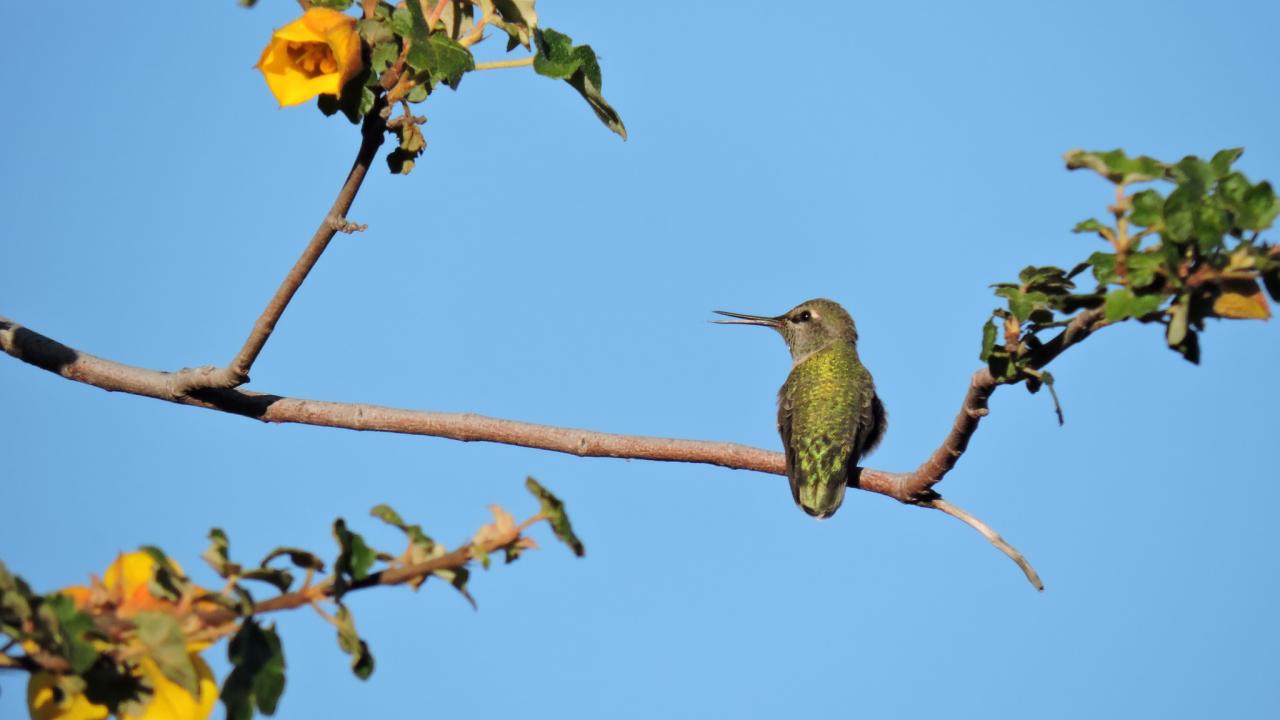
Hummingbirds in your Garden
by Ellen Zagory, director of public horticulture
Despite being the tiniest birds in the world, hummingbirds pack a lot of attitude. Feisty and noisy, these sparkling garden denizens are beautiful and entertaining. Our local year-round resident is the Anna’s hummingbird, a medium-sized hummingbird with an iridescent rosy-pink color on the neck and head (in males) that flashes brightly when exposed to sunlight at the right angle. Energetic and fast-moving, they can fly backwards, hover in place and fly upside down! Their wings beat on average seventy times per second; they fly at twenty-five to thirty miles per hour; and they dive even faster. All this activity means a typical hummingbird needs to eat a lot, seven times an hour. They are also smart about what they eat and when — they remember which plants give nectar, when they last drank from a flower, and how long that particular flower takes to refill its nectar. With all that showmanship, it’s no wonder hummingbirds are popular guests in any garden.
Like most animals, the way to a hummingbird’s heart is through its stomach! Encourage hummingbirds to visit your garden by selecting plants that will provide them with energy. That means nectar-filled flowers with little to no fragrance. These birds, like many, have a poor olfactory sense — the flowers that attract them tend to produce lots of thin, easy-to-drink nectar, but have little aroma. Flowers that hummingbirds pollinate tend to be tubular and hang down, making it hard for most insects to land in them while still being accessible to creatures capable of hovering in the air.
Hummingbirds drink from forked tongues that open up in the flower, trap the nectar, then pump it into their mouths through two grooves. While they frequently visit red flowers, hummingbirds will visit all sizes, colors and shapes of flowers — wherever they can get nectar, but hummingbirds do not survive on nectar alone. They’ll pick small insects from flowers, from the air, off leaves, or even off spider webs, sometimes along with the spiders themselves.
To get started on your hummingbird garden, plant a variety of species that bloom in sequence over the course of the year. It is also important to select plants that grow different heights and widths so these territorial birds can find a variety of locations to perch and place their nests. Planting willow, or other species whose seeds possess silken fibers, will be useful to hummingbirds for building nests. Also, remember that cats might predate upon the young birds or discourage nesting, so keep your cat indoors if possible or provide high branches where these birds can escape if needed.
